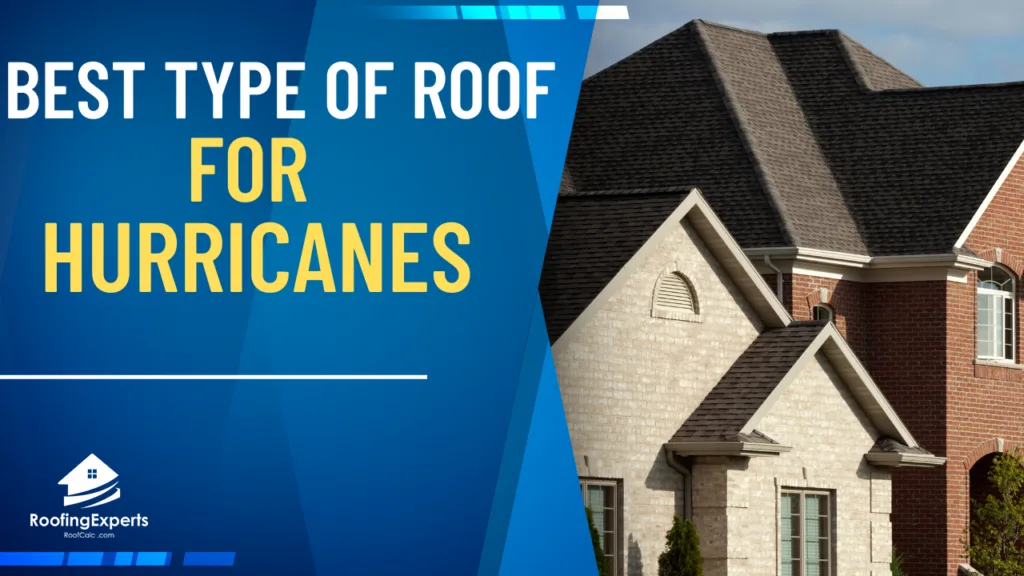
Hurricanes can cause severe damage to homes, particularly to their roofs. Therefore, selecting the right roofing material is crucial for homeowners in hurricane-prone areas.
The right roofing material can provide the strength and durability needed to withstand high winds, heavy rain, and flying debris.
In this article, we’ll explore the best types of roofs for hurricanes and provide a comprehensive comparison of their features, costs, and benefits.
Whether you’re building a new home or replacing an existing roof, this guide will help you make an informed decision to ensure your home is protected during hurricane season
Material Options for Hurricane-Proof Roofs
Metal Roofing
When considering a roof for hurricane-prone areas, metal roofing is an excellent option. This material is durable and can withstand wind speeds of approximately 140 mph.
Metal roofing comes in various styles, including standing seam and metal tiles. Common metals used for roofing are aluminum, steel, copper, and zinc.
Asphalt Shingles
Asphalt shingles are another popular option, as they are strong and able to withstand high winds and heavy rains.
These shingles consist of a fiberglass mat covered in asphalt and coated with gravel, providing excellent resistance to the elements.
When installing asphalt shingles, make sure to use high-quality underlayment and proper roof pitch to ensure your home’s protection.
Tile Roofing
Tile roofing can also work well in hurricane-prone areas. Roofing materials like clay, concrete, and slate tiles offer significant durability, especially when installed on a steep roof pitch.
Be aware that some tile materials can be heavy, which might require additional support for your roof’s structure.
- Clay tiles: Typically have a barrel-style design, providing wind resistance and durability.
- Concrete tiles: Available in various designs and colors, these tiles are strong and less expensive than clay tiles.
- Slate tiles: Known for their longevity, slate tiles offer a Class 4 impact resistance rating, meaning they can withstand significant force without fracturing.
Wood Shingles and Shakes
Wood shingles and shakes can be an attractive roofing option, but they require proper installation and maintenance to ensure their ability to withstand hurricane-force winds.
Choose high-quality materials like cedar or redwood, and ensure that underlying support structures and underlayment are sound.
Note that wood shingles and shakes might have a higher susceptibility to damage from wind-driven debris compared to other materials.
Slate Roofing
Slate roofing provides excellent durability and resistance to hurricanes, thanks
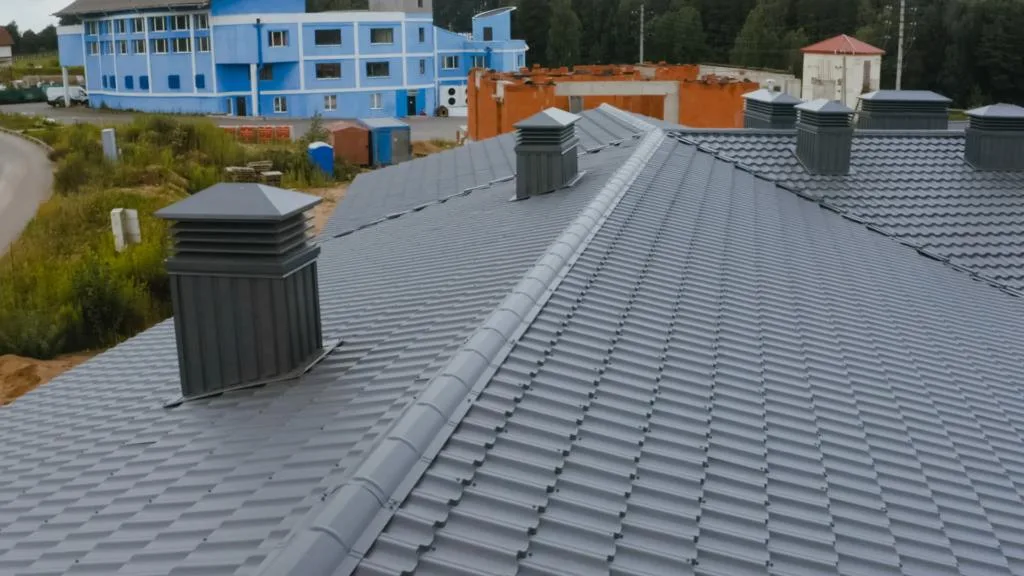
Factors to Consider When Choosing a Roof
Durability and Longevity
When selecting a roof for your home, consider materials with a long lifespan and strong durability. Look for warranties offered by manufacturers, as they can indicate the expected longevity of the material.
In hurricane-prone areas, it is crucial to choose a durable, hurricane-proof roof that can withstand high winds and storm damage.
Wind Resistance
In high-wind regions, such as those prone to hurricanes, it is essential to choose a roof design and material that offers excellent wind resistance.
A hip roof with a slope of around 30 degrees is an excellent option, as it is more stable than a gable roof and can handle gusts more effectively.
Additionally, consider adding hurricane ties to strengthen the connection between the roof truss and the home’s structural elements.
Maintenance and Cost
Consider not only the initial cost of your roof but also the long-term maintenance expenses associated with it.
Each roofing material has a different level of required maintenance, so research the best option within your budget with low maintenance needs.
In the long run, investing in a durable and low-maintenance roof can save you money.
Weather and Climate Compatibility
The region’s climate and potential natural disasters should be a significant consideration when choosing a roof. If your area experiences frequent hurricanes and high winds, opt for a type of roofing that can withstand such environmental challenges, ensuring your home’s safety.
| Environment | Roofing Material |
|---|---|
| High humidity | Metal, slate, tile |
| High winds | Metal, hip-shape designs |
| Wildfire-prone | Metal, slate, clay, tile |
Energy Efficiency and Eco-Friendliness
Select a roofing material with energy-efficient properties to reduce your energy consumption and contribute to a more eco-friendly lifestyle.
Reflective materials can help minimize heat absorption, keeping your home cooler in the summer months. Some environmentally friendly roof materials include metal, recycled shingles, and cool roofs.
Remember to keep these factors in mind when selecting the best type of roof for your hurricane-prone area: durability, wind resistance, maintenance and cost, weather and climate compatibility, and energy efficiency.
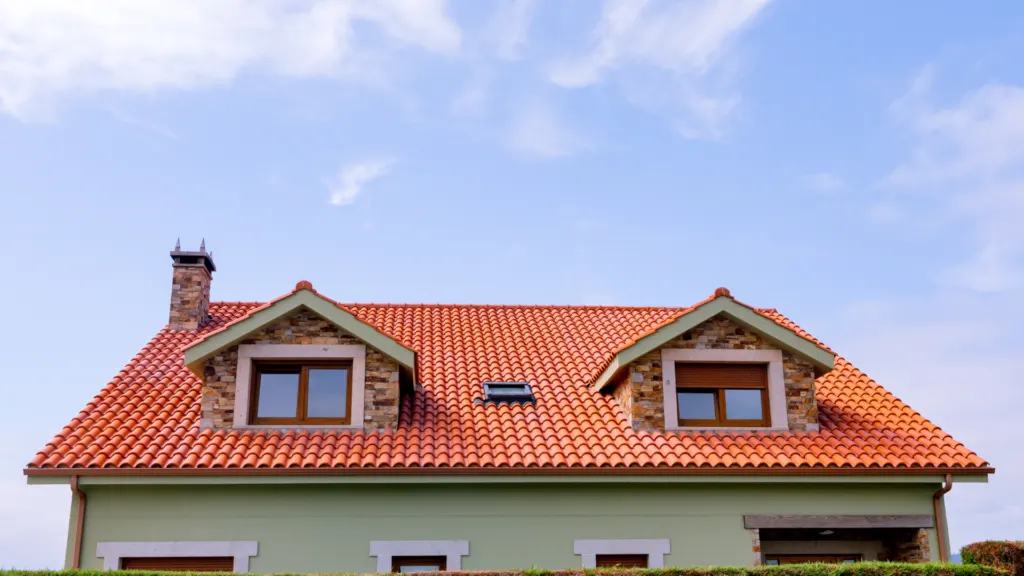
Roof Structure and Design
Roof Shape and Pitch
When it comes to choosing a roof shape for hurricane protection, opt for a hip roof. These roofs slope upward from all sides, making them more stable and wind-resistant compared to gable roofs.
A 30-degree roof pitch or slope is considered ideal, as it provides a balance between aerodynamics and structural stability. A more rounded or square hip roof can further improve its ability to withstand high winds.
Reinforcement and Fastening
To enhance the durability and wind resistance of your roof, pay special attention to the materials and fasteners used.
For instance, asphalt shingles made of fiberglass and coated with gravel offer strength and can withstand heavy rains and high winds.
Remember to use high-quality nails and fasteners to secure these shingles, while ensuring the proper overlap to prevent water damage during storms.
Consider installing hurricane straps or steel connectors to strengthen the connection between your roof and the home’s structure.
This reinforcement helps to keep the roof system intact during high wind events, reducing the risk of damage from uplift forces.
Building Codes and Installation Methods
Adhering to local building codes is crucial for ensuring your roof is not only compliant but also resilient during hurricane season. Codes typically account for wind-resistant requirements in hurricane-prone areas, so following them helps you achieve a durable and safe roof design.
Choose experienced professionals who are well-versed in appropriate installation methods for your specific roof type and materials.
Proper installation will further enhance the roof’s ability to withstand hurricanes, as well as reduce the risk of water damage and costly repairs.
By considering these factors—roof shape, reinforcement and fastening, and adherence to building codes and proper installation—you can bolster your home’s defenses against the fierce winds and heavy rains that accompany hurricanes.
Investing in a wind-resistant and durable roof plays a significant role in safeguarding your property and keeping you and your loved ones safe during hurricane season.
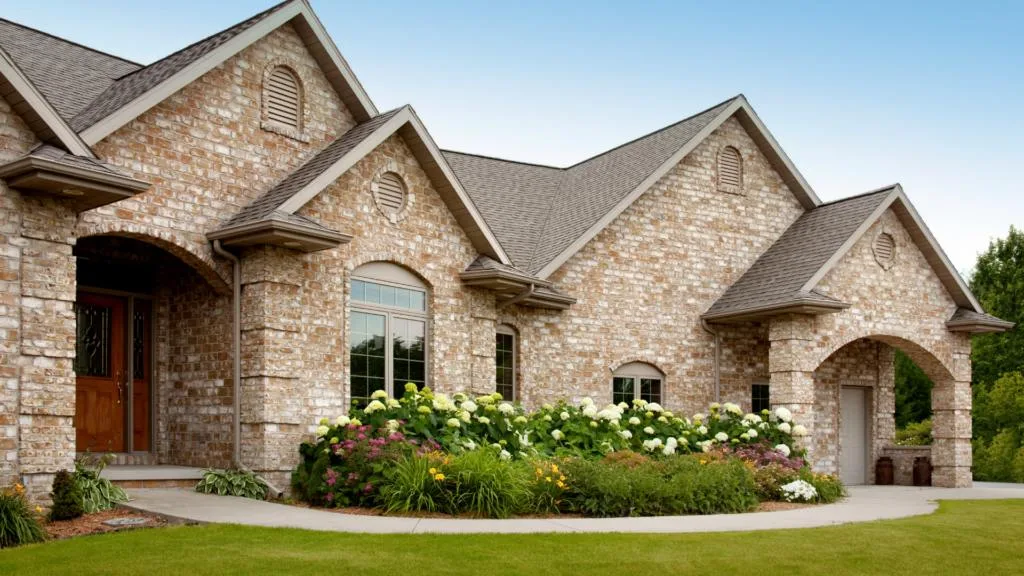
Choosing the Right Metal for a Metal Roof
When selecting a metal roof for your home in a hurricane-prone area, it’s crucial to choose the appropriate metal material.
Each type of metal offers distinct advantages and disadvantages in terms of strength, durability, and resistance to the harsh elements associated with hurricanes.
In this section, we will discuss two primary categories of metal roofing materials: Aluminum and Galvalume, and Steel and Other Metals.
Aluminum and Galvalume
Aluminum is a popular choice for metal roofing in hurricane-prone areas due to its lightweight, corrosion-resistant, and long-lasting nature. It is an excellent option for coastal homes, as it can withstand the corrosive effects of saltwater:
- Lightweight and easy to install
- Highly resistant to rust and corrosion
- Can be finished with a variety of coatings to improve its appearance and durability
Galvalume, on the other hand, is a combination of aluminum and zinc coated steel. This material offers the following benefits:
- Enhanced corrosion resistance compared to traditional galvanized steel
- Longer lifespan than galvanized steel
- More affordable than aluminum roofing
Steel and Other Metals
Steel is another common choice for metal roofing, as it is strong, durable, and available in various gauges and finishes. However, steel can be susceptible to rust if not properly coated or maintained. Here are some advantages of using steel for your metal roof:
- Strong and durable, able to withstand high winds and debris
- Can be coated with various finishes to improve its appearance and lifespan
- Offers a wide range of gauges, styles, and colors for customization
Other metals, such as copper and stainless steel, can also be used for metal roofing. Copper is a premium roofing metal known for its longevity, but it can be more expensive than other options. Stainless steel, while resistant to rust, typically costs less than copper but more than aluminum. Consider the following:
- Copper: Highly durable, long-lasting, and attractive, but expensive
- Stainless steel: Rust-resistant and moderately priced, but heavier than aluminum
When choosing a metal roofing system for your home, also consider factors such as the type of fasteners (hidden fasteners are recommended for their durability), the installation methods, and the panel design.
The appropriate combination of materials and installation techniques will ensure that your metal roof offers the best protection against hurricanes and their associated elements.
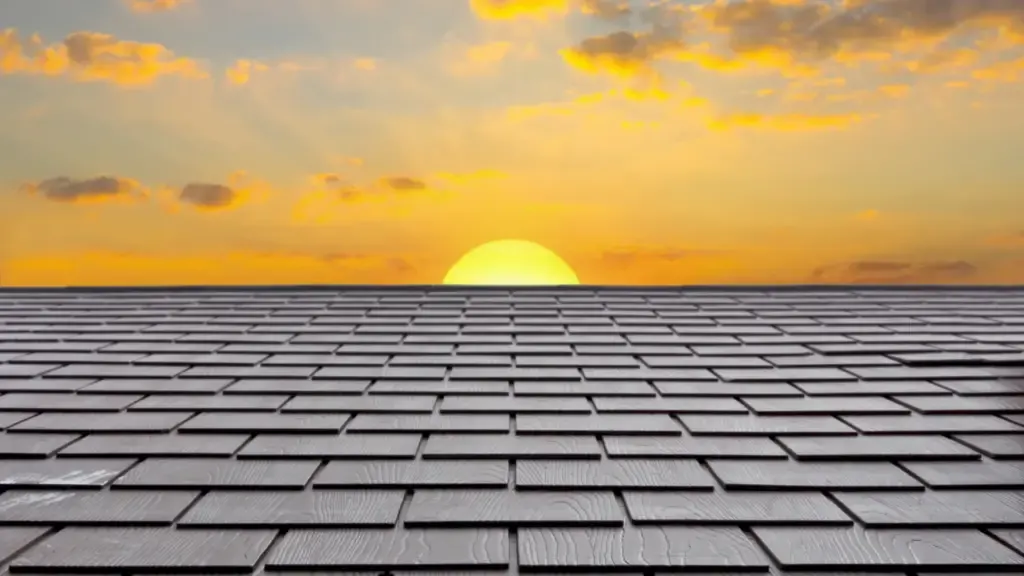
Professional Installation and Proper Maintenance
In order to ensure that your roof can withstand hurricane season and high winds, it’s important to prioritize both professional installation and proper maintenance. A well-installed and maintained roof is more likely to protect you against the risks of rain and storms during hurricane season.
When choosing roofing professionals for your home, it’s essential to find a licensed and insured company.
Hiring a company that is both licensed and insured guarantees that they have the necessary skills and expertise to install your roof correctly.
Additionally, an insured company provides protection for any damages that might occur during the installation process.
During installation, pay attention to the methods employed by the roofing pros. Experts in hurricane-prone areas have learned valuable lessons from past disasters, such as Hurricane Andrew.
Modern techniques like reinforcing roof trusses, using roof-to-wall attachments, and installing roof sheathing with proper fastening methods have been developed to maximize the performance and durability of your roof during high winds.
After your roof is professionally installed, it’s essential to maintain it regularly. Some maintenance tips include:
- Inspecting your roof annually, especially before and after hurricane season
- Clearing debris (such as leaves or branches) from your roof and gutters
- Checking for any signs of wear, loose shingles or tiles, or leaks
- Ensuring proper attic ventilation to avoid moisture problems and mold
By adopting these maintenance practices, you’ll be better prepared to face the challenges of hurricane season and can live with peace of mind knowing that both you and your loved ones are safe under a secure and durable roof.
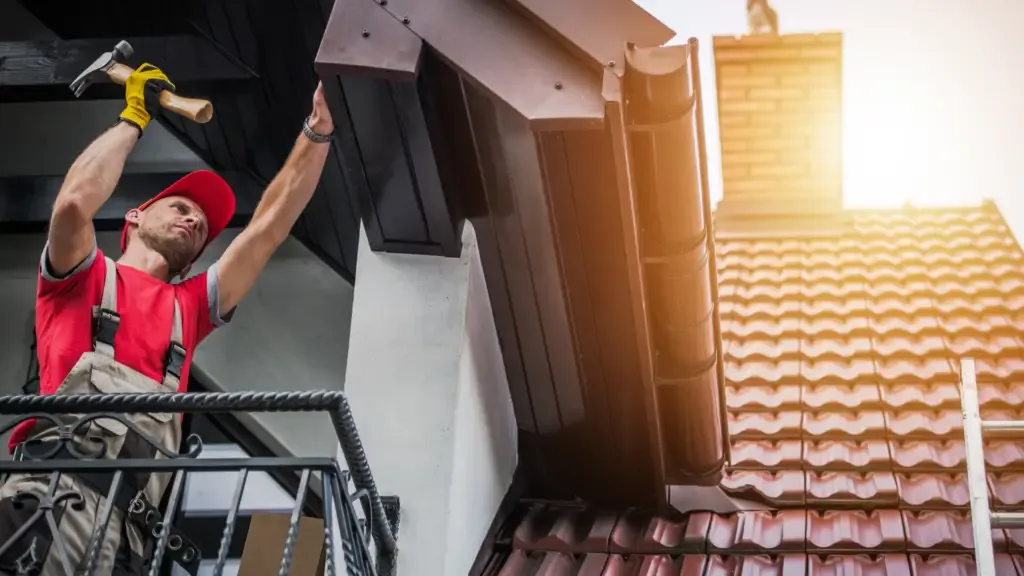
Common Drawbacks and Considerations
When choosing the best type of roof for hurricane-prone areas, such as Florida, it’s important to consider the potential drawbacks and challenges of each option:
- Asphalt shingles: While popular due to their strength and affordability, asphalt shingles can still succumb to strong winds and heavy rains. The fiberglass mat and asphalt coating can become damaged over time, leading to water infiltration during tropical storms.
- Hip roofs: Although hip roofs are more stable than gable roofs, they may not provide the optimal slope for all homes. To withstand strong winds, a 30-degree angle is recommended, but this may not prove feasible for every home’s architectural design.
- Metal roofs: Steel roofing is a popular choice for hurricane-prone areas, but it can be susceptible to rust and other forms of degradation over time. It’s crucial to ensure that your metal roof is properly installed and maintained to prevent issues related to corrosion or rust.
- Clay and concrete tiles: While these materials offer a visually pleasing option for homeowners, they can be quite heavy and costly. Additionally, they may not provide the same level of wind resistance as other roofing materials, such as metal.
- Split logs and handmade shakes: Though rustic in appearance, these materials may not be the most practical choice for hurricane-prone areas. Their lack of uniformity can lead to weak points in the roof structure, leaving your home vulnerable to storm damage.
In conclusion, when selecting the best roof type for a hurricane-prone area, carefully weigh the advantages and disadvantages of each option. Consider factors such as cost, durability, and wind resistance to make the most informed decision for your home.
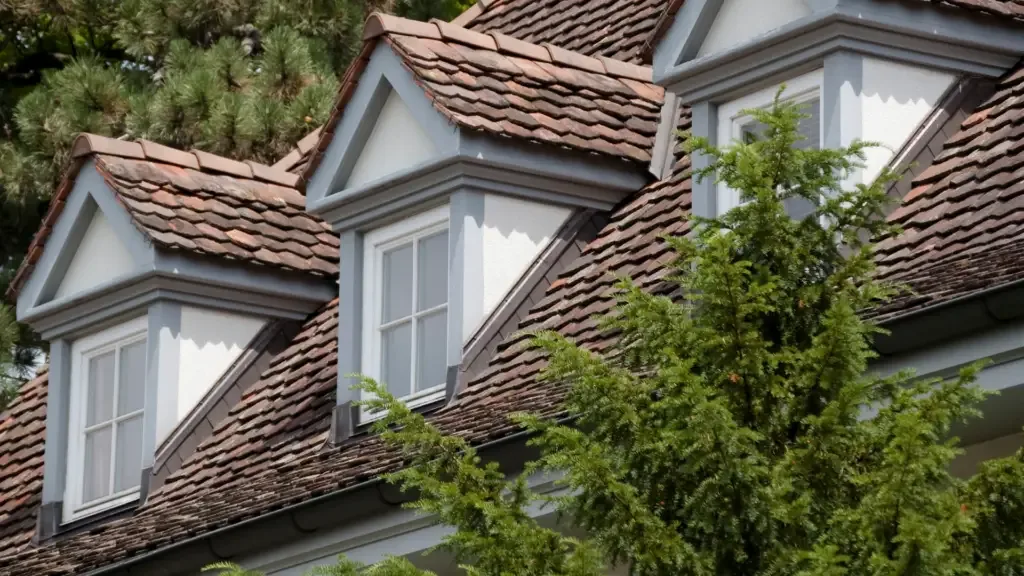
Florida Building Code and Hurricane Resistance
The Florida Building Code has specific requirements and recommendations for roofing materials that can better withstand hurricanes.
These codes are in place to ensure that homes and buildings in the region are adequately protected from the high winds and water that often accompany hurricane events.
As a homeowner in Florida, it’s essential to be aware of these guidelines when selecting the right roofing material for your home.
Metal roofing is highly recommended due to its proven ability to withstand hurricanes, offering both durability and longevity.
The cost for stone-coated steel roof tiles generally ranges between $10.00 and $16.50 per square ft., and they provide an excellent value in terms of strength and durability.
New metal roofs constructed to meet Florida Building Code standards are designed to remain secure and intact during high-velocity hurricane conditions.
Natural slate is another roofing material that can provide superior resistance to hurricane-force winds. While it may be more expensive than other options, the durability and longevity of natural slate make it a worthwhile investment for homeowners in hurricane-prone areas.
Additionally, slate’s innate weight makes it less prone to uplift during strong winds, further increasing its resistance to hurricanes.
To ensure your roof meets Florida’s hurricane-resistant standards, be sure to adhere to the following code guidelines:
- Roof coverings installed on low-slope roofs (roof slope < 2:12) must resist impact damage, based on tests conducted in accordance with ASTM D3746, ASTM D4272, or the “Resistance to Foot Traffic Test” in Section 4.6 of FM 4470.
- All structural metal roofing systems should have a thickness equal to or greater than the minimum requirements outlined by the code.
- Roofing materials should be rated to withstand wind and water damage, as required by the 7th Edition (2020) of the Florida Building Code.
By choosing roofing materials that meet or exceed the Florida Building Code requirements and following the proper installation guidelines, you can better protect your home and possessions from the potential damage caused by hurricanes.
While no roofing material can guarantee complete protection in extreme weather conditions, adhering to these standards will significantly reduce the likelihood of roof damage and ensure the safety of you and your family during such events.

